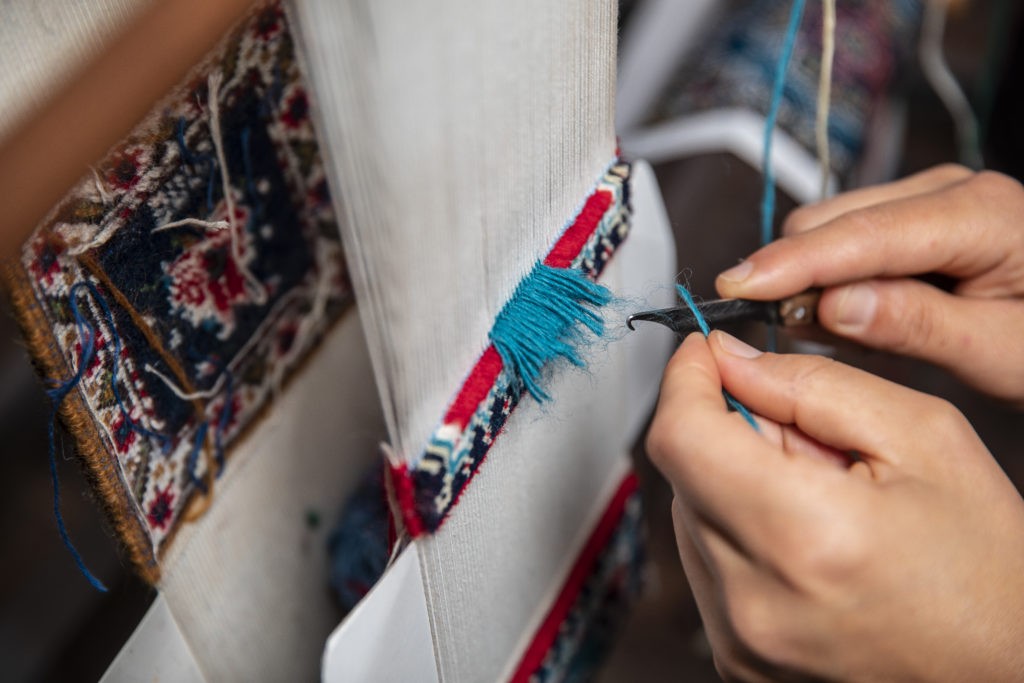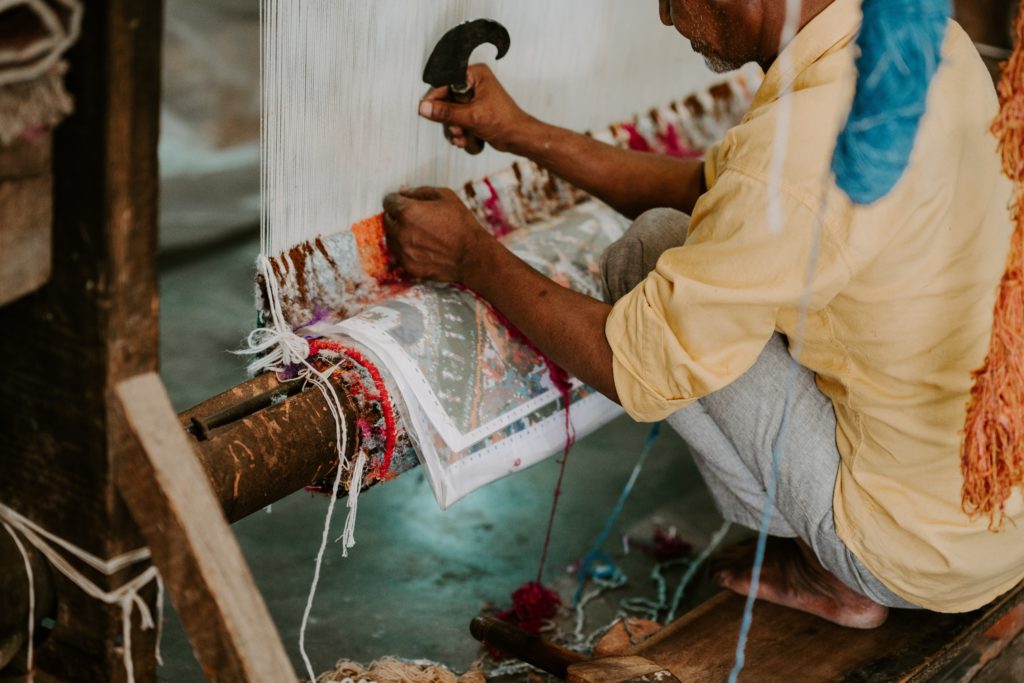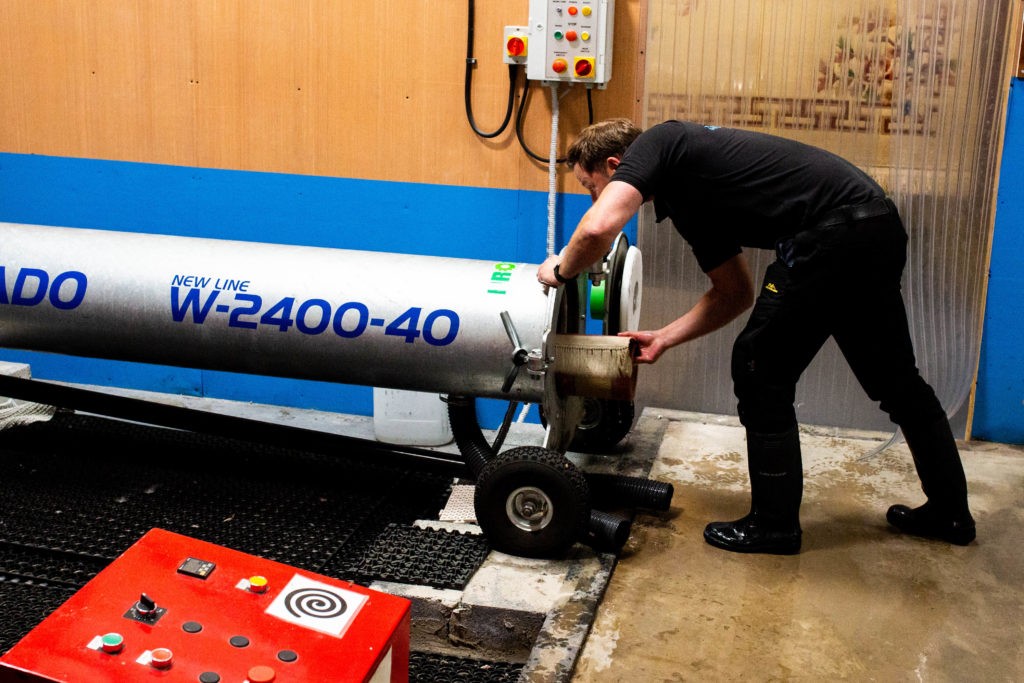The first ever rugs were made by tribal shepherds who needed heavy clothes to shield themselves from the cold and wind. However, they soon started to use them as floor coverings as well.
Over the centuries, rug makers have developed techniques to weave amazingly beautiful patterns and turned rug making into a form of fine art. Today, rugs are made both by hand and machine, but much of the process has remained the same.
Believe it or not, most modern-day rugs are made with the same techniques used by master weavers for hundreds of years. The finest hand-woven rugs still require considerable time and attention to detail. And while machine-made area rugs can be made more quickly, the same basic techniques remain in place. In most cases, the quality and price of your rug will be determined by the construction time and the talent of the weaver. But don’t forget to consider texture and appearance when shopping.

Wool is the most popular material for making rugs. It’s strong, soft, long lasting and beautiful. Once unprocessed wool arrives at a rug making workshop, it is separated by hand to break up the clumps an remove any foreign materials that may have got stuck in it. Then it is fed into a machine that pulls it into individual strands. The strands are then spun into yarn. In previous centuries, wool was spun by hand on rudimentary spinning wheels. The yarn is then washed to remove the dust and grease thoroughly.
The process involves submerging it in a detergent bath, wringing it out several times, and then washing it with clean water to remove the detergents. The washed yarn is dried in the sun for two to three days and then hung onto a rack and submerged in a dye. The dye is created by using a combination of natural or synthetic elements to produce the desired hue. To allow the dye to work it’s way into the yarn, it is heated to a near-boiling point temperature for a specific period of time. The longer the time, the darker the hue. The dyed yarn is then put out in the sun to dry, and once dry, it is ready to be woven into a rug.

There are three ways to weave a rug:
First, an artist draws a design for the rug on a special graph paper. A frame is then prepared by stretching columns of the thread, called warps, vertically down the loom. Warps are usually made of cotton. The weaver then weaves the yarn knot-by-knot on the loom using a knotting method, such as a Turkish knot, Persian knot, or Tibetan knot.
A pattern is drawn on a primary backing material using a stencil. The backing material, usually made of cotton, is attached to a frame. The weaver inserts tufts of wool into the backing material using a tufting tool. The primary backing material is then covered with a latex material and a secondary backing material is attached. Then the surface loop pile is sheared to create a flat surface with a dense pile.
Once the design, pattern, and colours are chosen, usually from other rugs or pictures, the weavers weave the rug using a scaffolding system that allows them to raise and lower themselves along the entire length of the rug. They use a specialised tool to push the yarn back and forth through a cotton backing. This is the easiest and least expensive method of making rugs.
Once completed, the rug is one again washed thoroughly to remove dirt, detergent and yarn particles. The washing process involves laying the rug on a flat surface, pouring clean water over it, and using wood planks with sharpened edges to force the water through the rug. Rug making is a time consuming and labour-intensive process. It often takes several weeks to several months to make high-quality rugs. But for the makers and collectors, the resulting works of art are well worth all the trouble.
If you’re looking to freshen up a rug then get in touch with us today! You can fill out our form to receive a free quote, give us a call on 01269 842497 or email us at hello@theruglaundry.co.uk.

Source: A Comprehensive Guide to Oriental & Specialty Rug Cleaning by Ellen Amirkhan & Aaron Groseclose